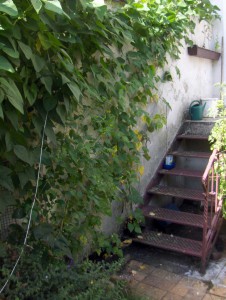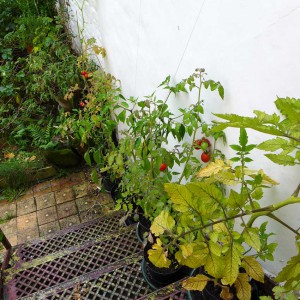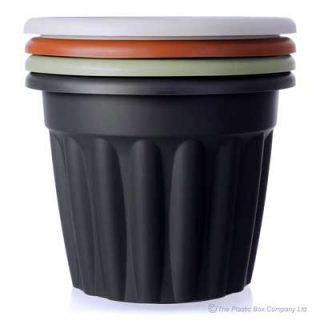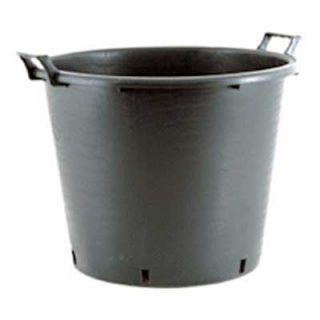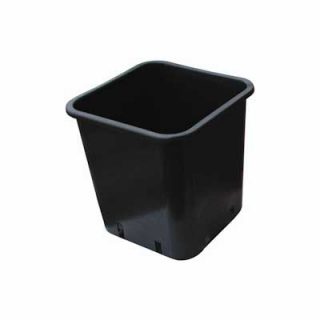
The purpose of this blog is to show and compare vegetable growing in a small urban garden between regular soil bed areas and the other small corners and edges around the garden. The simple distinction here is between growing on a soil base or on a solid surface.
With smaller gardens a lot of space is taken with access ways, paths and stairs. These can prove very suitable for container gardening if carefully considered. Maintaining good access is however important, especially if children or teenagers have use of the garden. Care is required in design and positioning to ensure access ways are not blocked.
The balcony in this garden is a standard 2.5 metres long by 1 metre wide with metal fence on two sides, doors and wall on the other two. It sits 1.5 metres above ground level in the garden and has a set of six metal stairs leading down to the garden, with space under the stairs. The fenced sections are 1 metre wide and 1.8 metres wide. The wall section of the balcony is 1 metre wide with un-limited height available.
The combinations of what is possible in this small space are endless. However, it is important to recognise that many activities take place in this area at different times of the year, for example, seedlings are hardened out here in spring time to keep them safe from slugs. It is the busiest access area to the house. Thus small scale experimentation with various pots and containers that can be easy moved is a good way to test out the growing potential of the area.
The metal fence on the balcony can support a total of six 1 metre long growing trays (3 on the top rail and 3 on the bottom rail). This provides extensive space for salad and herb cultivation which can provide for the household throughout the growing season. Convenient access to the kitchen lends this area to being the primary kitchen garden space.
On the ground surface of the balcony there is sufficient space for additional (possibly deeper) growing trays and other containers such as half a dozen heavy ceramic herb pots. The priority in planning this area is to utilise immediate access, provide for constant use material (for example, picking salad leaves and herbs), and avoid cluttered or little used garden produce. This part of the garden should be visited and used almost every meal time. It also lends itself to care and attention for seedlings and starting plants.

The wall section of the balcony can support a tiered arrangement of 3 growing trays hanging on the wall. It can also support larger pots or trays at the bottom of the wall with climbers (such as beans and tomato vines) growing up the wall. In the case of this garden this area is kept reasonably clear in order to avoid over cluttering this busy access area.
The stairs down to the garden naturally lend themselves to pots on each step with climbers (beans, tomatoes and cucumbers) using the adjacent wall. The ground area at the base of the stairs can accommodate a larger container to assist the climbers.
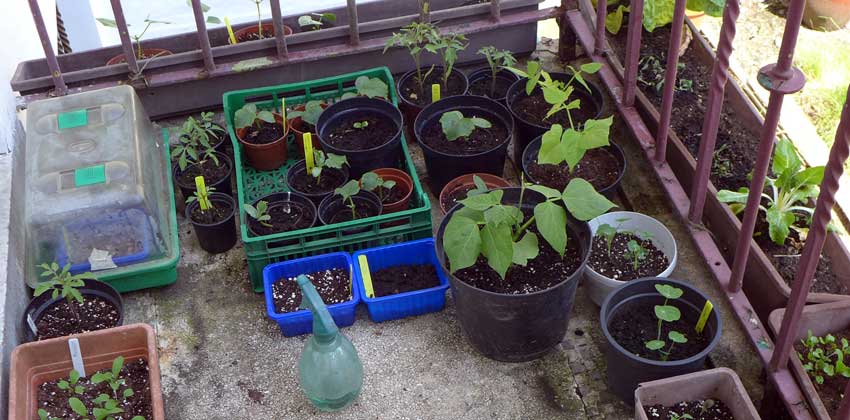
The stair wall, although shaded for good parts of the day has proven quite successful planting though naturally the choice of species requires consideration to avoid bushing on the stairs.
The space under the stairs is used for storage of cold frame and nursery materials after their use in the spring. In a small garden careful consideration has to be given to suitable storage for tools and equipment throughout the year. Again, looking for small and versatile solutions that can be moved around the garden as needed is important in a small garden.
In general, balconies in cities are often the only growing spaces available. Solid and string frames can be attached to create additional growing space vertically but it is also important not to overgrow an area creating a jungle or closing in the feeling of space. Small solutions invariably produce better results.
